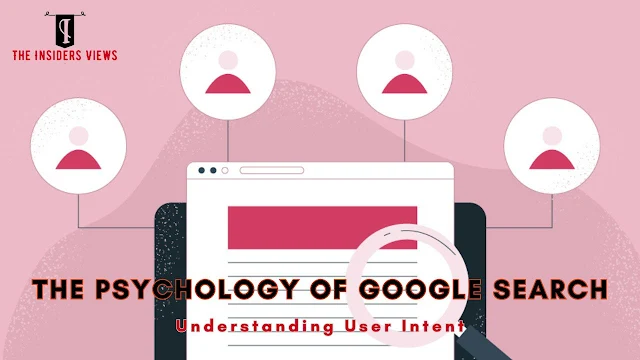The Psychology of Google Search: Understanding User Intent
In the vast landscape of the internet, understanding the intricacies of Google search is akin to deciphering a complex puzzle. The Psychology of Google Search delves into the core of user intent, unraveling the enigma of how people search and what drives their online behavior. In this comprehensive guide, we explore the psychological nuances behind Google searches, shedding light on the motives, emotions, and cognitive processes that shape user intent.
 |
| The Psychology of Google Search: Understanding User Intent |
Decoding User Intent: A Journey into the Human Mind
In this section, we unravel the mysteries of user intent, exploring the various factors that influence how individuals search on Google. Understanding the human psyche is essential for optimizing your online presence.
The Role of Emotions in Search
In the realm of Google search, emotions play a pivotal role. Users often seek information that resonates with their feelings - be it curiosity, excitement, or urgency. Understanding these emotions can guide your content strategy, ensuring it strikes a chord with your audience.
Cognitive Processes: How People Formulate Queries
The human mind is a complex web of thoughts and ideas. When crafting a search query, individuals rely on their cognitive processes. Exploring these processes provides valuable insights into the keywords and phrases people use, helping businesses tailor their content to meet user expectations effectively.
The Influence of Social and Cultural Factors
Social and cultural factors significantly impact how users phrase their search queries. Cultural nuances and societal influences mold language, affecting the choice of words people use in their searches. Acknowledging these factors aids in creating culturally relevant content, expanding your reach across diverse demographics.
Strategies for Optimizing Content Based on User Intent
Understanding user intent is the cornerstone of effective SEO strategies. Here are actionable tips to optimize your content and enhance your online visibility.
Crafting Tailored Content: Meeting User Expectations
Tailoring your content to align with user intent is paramount. By conducting thorough keyword research and analyzing search patterns, you can create content that directly addresses the queries of your target audience. This approach not only enhances user experience but also boosts your search engine rankings.
Interactive Content: Engaging Users on a Deeper Level
Interactive content, such as quizzes, polls, and surveys, captivates users' attention. By encouraging active participation, interactive content provides valuable insights into user preferences and opinions. Utilizing this data, businesses can refine their offerings and cater to the specific needs of their audience effectively.
Visual Appeal: Enhancing User Engagement
Visual elements, such as images, infographics, and videos, enhance user engagement. Visual content communicates complex ideas swiftly and effectively, capturing users' attention and encouraging them to explore further. Integrating visually appealing elements into your content strategy enhances user experience and encourages prolonged interaction with your website.
FAQs (Frequently Asked Questions)
What is the significance of user intent in Google search?
User intent shapes the way people search for information online. Understanding user intent enables businesses to align their content with the specific needs and queries of their audience, enhancing user experience and driving organic traffic.
How can emotions influence the choice of search queries?
Emotions evoke specific needs and desires. Users often search for content that resonates with their emotions, leading them to use keywords that reflect their feelings. Businesses can leverage emotional cues to create compelling, relatable content that connects with their audience on a deeper level.
Why is interactive content crucial for understanding user intent?
Interactive content actively involves users, providing real-time insights into their preferences and opinions. By analyzing user interactions with interactive content, businesses gain valuable data, enabling them to tailor their products or services according to user expectations, thus enhancing user satisfaction.
How do social and cultural factors impact user intent?
Social and cultural factors influence language use and search behavior. People from different backgrounds and cultures may phrase their queries differently. By considering these factors, businesses can optimize their content to cater to diverse audiences, fostering inclusivity and broadening their reach.
What role do visuals play in enhancing user engagement?
Visual elements, such as images and videos, convey information swiftly and memorably. Users are naturally drawn to visually appealing content, making it an excellent tool for capturing and retaining their attention. Integrating visuals into your content strategy enhances user engagement, encouraging users to explore your website further.
How can businesses effectively optimize their content based on user intent?
Businesses can optimize their content by conducting comprehensive keyword research, understanding search patterns, and analyzing user behavior. Crafting tailored content that directly addresses user queries, incorporating interactive elements, and enhancing visual appeal are key strategies for optimizing content based on user intent.
Conclusion
In the dynamic realm of Google search, understanding user intent is paramount. By delving into the psychology behind search queries, businesses can create content that resonates with their audience, driving organic traffic and fostering meaningful connections. Embrace the intricacies of user intent, tailor your content accordingly, and witness your online presence flourish.






Post a Comment